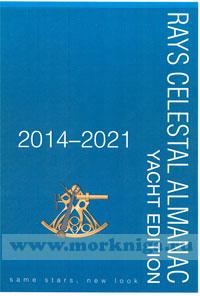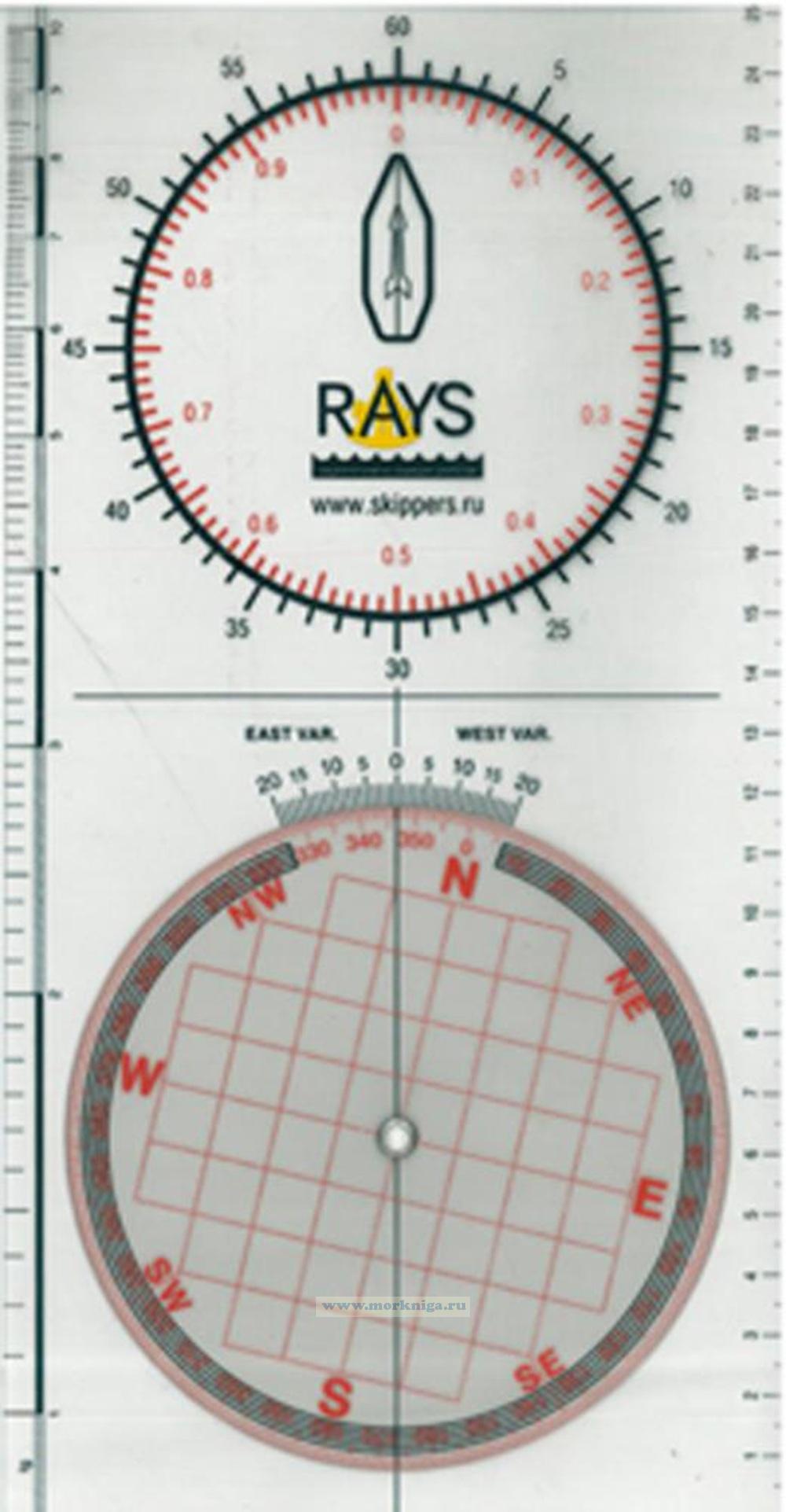RAYS celestial almanac 2014-2021. Yacht Edition
This almanac contains all data you need to obtain your position using the Sun, the planets or the most bright stars also known as navigational stars. This issue cover 8 years from 2014 until 2021. One of the obstacles for those trying to practice in celestial navigation is the need to have a full set of supplementaiy books in addition to the sextant itself. If a yacht is not limited by just one region it should have at least four full-sized books: Pub. 249 Vol. 1-3. and the Nautical Almanac.
The latter must be for the current year therefore must be replaced annually. Of course, for occasional practicing in the celestial navigation we may reduce the amount of paper by printing out just the pages that we would need in that particular trip in a known location and for a certain dates. We can even use the specialized computer programs that will automatically calculate the intercept and bearing (or even give you an exact coordinates) by just entering the sextant values, time of sight and the coordinates of the DR position. However, the whole point of celestial navigation as an emergency navigation is against such simplifications. That's why the idea of compressing of all the essential data and calculation methods into one compact and easy to use publication seems veiy reasonable to us. Unfortunately we were not able to include the Moon into this almanac because of its choleric behavior which makes it impossible to interpret its behavior with a reasonable accuracy. It might be the topic for an additional publication.
Generally, we can't add anything brand new to the basic methods of celestial navigation which are normally given in the maritime educational institutions or the Yachtmaster courses.
Having the rough estimate of our position we measure the altitude of a celestial object above the visible horizon and after applying the sextant altitude corrections we get the true altitude of a celestial object above the true horizon. This gives us the real distance from the geographic position of the projection of the celestial object to the surface of the Earth.
On the other hand, by the interpolation between two tabulated values for an exact time we can get the hour angle and the celestial body's declination. Then we may draw a point on the globe where the projection of the celestial body were exactly at the time of measurement. If we also put our dead reckoning position on the globe we would get a PZX triangle where the relative position of the DR and GP points clearly gives the azimuth and the distance between them. The solution of the PZX triangle gives us the calculated altitude of the body above the horizon. By comparing the calculated and the real altitude we know how far our true position is from the DR position. The better we were doing our dead reckoning, the larger scale of a chart we may use for plotting. Knowing the basic principles of celestial navigation and having some experience in using the classic set of Pub. 249 and Nautical Almanac any navigator can easily understand the methods in this publication and hopefully will appreciate its simplicity and transparency.
Daily data about the position of the main celestial objects on the celestial sphere such as Aries, Sun, Venus, Mars, Jupiter and Saturn tabulated for the beginning of each day on Greenwich can be found in the Ephemerides section. The main distinction of this almanac is that data in the ephemerides is given with a 24 hour interval instead of one hour interval. Naturally the methods of interpolation will be different to those used in standard nautical almanac. Despite the fact that the procedure of interpolation consists of the bigger amount of sum operations rather then the standard procedure known to those familiar with the classic nautical almanac, it really turns out to be more natural and logical. In the section Heavenly Body Position there are useful forms for hour angle and declination calculations that will allow to minimize the chance of a silly arithmetical error.
The positions of the stars are given in the table Selected Stars with a one month interval.
This almanac contains a lot of simplified methods which should especially satisfy yachtsmen. Among those methods there are visual estimation of the LHA Aries using the position of the constellations or the table of LHA Aries given for the moment of the civil twilight depending on the year season. These methods allow to easily plan the forthcoming observations.
Also in the Observation Planning section there is a yearly graph of the sun declination and the equation of time that will allow to plan the noon observation and interpret it with enough accuracy in case of an emergency navigation; the length of the day depending on the latitude and declination or the latitude and the time of year; magnitude of the planets table and other useful data.
Observation reduction is done using the solution for the spherical triangle. To avoid the complicated math which would require to use a computer or a calculator there is a table with sin and cos values. Useful forms will allow to easily obtain the calculated height and azimuth.
The ephemerides data was produced using the professional version of AstroNav application by NavSoft, all other calculations and tables were done using the Libre Office open source suite.
Content
OVERVIEW
PART1. SEXTANT ALTITUDE CORRECTION
Sextant correction form
Refraction
PART2. SITE PLANNING
Declination and Equation of Time
Time zones
Arc to Time
NOON sight planning
Twilight sight planning
Lengh of day
LHA Aries for Twilight
LHA Aries by Stars
Star Map
Starfinder
LHA of Planets for Twilight Lengh of day by Month Magnitude of the Planets Sunrise-Sunset Azimuth amplitude
PART 3. HEAVENLY BODY’S POSITION
GHA and Declination Calculation Forms
Increments
Corrections
Calculation of Stars position Increments and corrections explanations Efemerides Stars
PART 4. REDUCTION OF OBSERVATION
Reduction explanation Altitude Calculation form Asimuth Calculation form Plotting the Line of Position Sinus/Cosinus Tables

 Навигационные звёзды
Навигационные звёзды  VHF: радиооператор морской связи УКВ
VHF: радиооператор морской связи УКВ  Плоттер RAYS
Плоттер RAYS